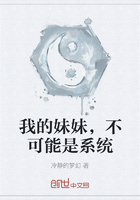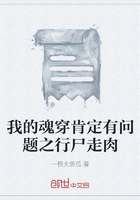“THE POOR ARE VERY DIFFERENT FROM YOU AND ME”
In this chapter you'll meet your customers where they live, and you may gain new perspective on poverty as it's experienced in developing countries.
Unless you yourself grew up in poverty in the Global South, you'll find an environment there that may be radically different from anything you've experienced before. You'll also learn that the conventional wisdom about poverty being an unrelieved misery is a myth. Here's a taste of what you'll encounter as you set out to establish a business to serve the poor — because, if you follow our lead, one of the first steps you take will be to venture out into the field to talk to people like those portrayed in this chapter, the people who will become your customers. These are people who constitute a marketplace to be served, with real needs to be met.
Sunil Mahapatra
As we enter the outskirts of a village in eastern India, we come across a farmer who appears to be in his early 30s. We'll call him Sunil Mahapatra.[1] Sunil lives with his wife and three children in a small mud-walled house on the east end of their village. Until recently, he and his family earned their living from one and a quarter acres of land divided into five separate fields scattered around the outskirts of the village. This includes a half-acre of monsoon-fed lowland rice. The family plants a local variety of rice, hand-broadcasting a few kilos of urea to the rice twice during the growing season. With the help of rain-fed irrigation, Sunil and his family harvested 1,300 to 1,500 pounds (600 to 700 kilos) of rice each year. Their two daughters, aged 6 and 8, and a 12-year-old son helped them keep two young goats for meat and 10 chickens. They also kept a small vegetable garden. Their dream was to someday buy a young buffalo to raise to maturity.
However, Sunil and his wife have had to scrimp and save, setting aside most of their income for the better part of a year, to provide the dowry for each of their daughters. (They hope to get at least some of this back when their son marries, especially if they can keep him in school long enough to command a good dowry.) They planned to take their daughters out of school after grade six because they couldn't afford to pay for the school uniforms and textbooks required for later grades. Besides, the girls were needed to help with chores at home and tend to the goats and chickens. If they could improve their income from farming, they dreamed of being able to support their son all the way through high school, and then he might be able to earn enough money to help the whole family move out of poverty.
During the dry season, when he grew little in the way of crops, Sunil usually went to the city to find work. He hired on as a rickshaw puller. After he paid the rickshaw fleet owner and modest lodging and food expenses, he got to keep 50 rupees a day. With the 4,500 rupees he usually earned from rickshaw pulling, an additional 2,500 rupees from selling rice, 3,500 more from growing sunflowers, and 2,000 from his wife's basket-making, Sunil and his family survived on 12,500 rupees in cash income each year, which amounts to about $0.70 a day. But they grew enough rice to keep the family fed for the whole year as well as monsoon vegetables to augment their diet during the six months of rainy weather.
All of this changed dramatically two years ago, when Sunil heard about a low-cost manual irrigation pump that he could use to grow a half-acre of vegetables during the dry season, when vegetable prices were two to three times as high as during rainy weather. He and his wife were able to save 250 rupees to make a down payment on a treadle pump being promoted by an organization called International Development Enterprises (IDE). They took a big gamble, borrowing 1,000 rupees from a local moneylender at an interest rate of 100 percent for four months. But Sunil was a very good farmer. By enlisting everybody in the family to pump, he could produce about 3,000 gallons (12,000 liters) of water in six hours, enough to irrigate a half-acre of vegetables in the dry season.
In the first year, Sunil and his family grew tomatoes, a high-yielding variety of eggplant, chili peppers, cucumbers, and cauliflower, which they were able to sell in the village market for an astounding 7,400 rupees (about $148). This left them with about 5,500 rupees ($110) in net profit, not counting their labor. With this, they were able to pay off the 2,000 rupees they owed the moneylender and have 3,000 rupees (about $60) more to spend.
In the second year, Sunil learned to get a better price by bringing the family's vegetables to the market before the seasonal glut, and he cleared 6,000 rupees. The result was a total of 7,000 rupees in net additional income in the third year. With an increase of more than 50 percent in net annual income, the family has been able to put a corrugated tin roof on its house, improve its rice yield by investing in higher-yielding seeds and fertilizer, and realize its dream of raising a water buffalo.
Best of all, they now plan to keep all three of their children in school as long as they want to go. If they are good at their school-work, one of them might even have a chance to go to college!
Sunil's Village
OK, let's not beat the obvious to death. We'll stipulate that (a) you've got a lot more money than Sunil Mahapatra (after all, he couldn't afford to buy this book), and (b) you probably have running water, indoor plumbing, and electricity in your home, and he doesn't. But real people's lives can't be summed up so simply. So, let's drill down a little more deeply, moving in for a close-up look at the East Indian village where Sunil and his family live.
The village is located in the state of Orissa, one of dozens where an early-stage company named Spring Health (described later) has opened for business, offering safe drinking water at a very low price to villagers throughout the region. We'll call the place Bahrimpur. It lies about 8 kilometers from the sea and halfway between Bhubeneshwar, the state capital, and the seaside city of Puri, 70 kilometers to the south.
Bahrimpur is home to 260 families. It boasts three small shops (called kirana shops) selling consumer goods such as spices, cookies, candies, and an abundance of small sachets, hanging in vertical rows, filled with products ranging from chili powder to ayurvedic (traditional Hindu) medicines to laundry detergent. The village also is home to a small tea shop and a Hindu temple.
Most of the families in Bahrimpur are Hindu, but it has a small Muslim community as well. The village also houses 30 untouchable families living across a dry streambed in a poorer section.
Bahrimpur and four nearby villages are governed by a panchayat,[2] an elected body of five wise and respected elders that oversees subcommittees responsible for local roads, preschool programs, and poverty alleviation through the federal government jobs program. In Bahrimpur itself, the people of greatest influence include the village's representative to the panchayat, the larger landowners, a school principal, and village entrepreneurs, who often run kirana shops as well as other businesses such as coconut trading and firewood.
Life in Bahrimpur takes place when the sun is up. At night, in the absence of a brilliant moon, the village is “a world lit only by fire,” to borrow the title of William Manchester's compelling description of medieval Europe.
Seven hand pumps have been installed in the village by the government, but five of them are no longer working because when they broke, nobody in the village owned them, so nobody fixed them. One of the two pumps still working is contaminated.
The government also built two large, shallow, open wells, lined with stones. These are major community meeting points for village women, but they have no hand pumps. (It's considered unseemly for women to walk more than 150 feet — 50 meters — or so from their homes to fetch water, but no such restriction exists for men.) Women draw up water hand over hand using ropes attached to beat-up old plastic buckets. One woman loses her bucket, and another fishes it out, cleverly using her own rope and bucket as a fishing rod. Another pours water into a tub into which she has emptied a sachet of detergent: she puts her laundry in, steps on it rhythmically with her feet, rinses it out, and carries it home in a bundle to dry. Another fills her traditional brass drinking water vessel and carries it home on her hip. But there is a problem.
When Spring Health tested the water in the two wells, both of the petri dishes in which samples from these wells were incubated displayed more than a hundred shiny, white, round colonies of E. coli, well above the standard of two or fewer for safe drinking. In fact, more than 90 percent of the more than 1,000 samples of water that people were drinking in villages like Bahrimpur in Orissa tested positive for E. coli.
A typical household of five or six in Bahrimpur includes a mother and father and three children, but brothers, grandparents, uncles, and aunts often live there as well. Two-thirds of the families living in Bahrimpur survive on less than $2 a day. One-tenth of the approximately 700 adults in the village are illiterate, and another tenth went to college. About 175 attended primary school; a smaller number, some 140, finished upper primary, and about as many finished high school.
Fewer than 10 percent of the people living in Bahrimpur use latrines. The rest use the fields, a practice euphemistically referred to as “open defecation” by public health experts. People have been doing this for years and see no reason to change. During the monsoon season, when a third of the land around the village is under water, fecal pathogens from the fields get washed into the shallow, open wells where many families obtain drinking water. These wells cost only about $75, and villagers have built a lot of them, so most people have easy access to water year-round. The end result is that the average family in Bahrimpur spends between $25 and $250 per year on medicines, oral rehydration salts, clinic visits, and, in the more severe cases, admission to the hospital to treat the illnesses they get from drinking contaminated water.
Most of the people in Bahrimpur make a living from farming. The majority of them grow subsistence crops such as rice, both to eat and to sell. Some also grow vegetables during the rainy season, mostly for home consumption. A few raise irrigated, dry-season crops. About 15 percent of the families are landless laborers who earn some income helping the larger farmers in the village plant or harvest their crops, migrate to cut sugar cane, or take seasonal construction jobs in towns and cities. Some benefit from a government-run poverty reduction program that provides about $2 a day to anyone who wants to work digging and cutting stone blocks for construction.
Now let's meet a few more of the people who live in Bahrimpur.
Neelam Nanovati
Neelam is a widow who lives in a small thatched-roof house on the edge of Bahrimpur. Until recently, she, her husband, Ibrahim, and their two sons earned a reasonable living farming cotton on their one-and-a-half-acre farm. Then, three years ago, her husband took a large government-backed loan with the intention of doubling the cotton harvest. He planned to lease more land and take advantage of improved cotton seedlings and apply more fertilizer and pesticides. Unfortunately, an invasion of leaf spot destroyed half the crop, and he couldn't meet the loan payments. In despair, Ibrahim hanged himself. Two years ago the family lost its land.
Neelam and her sons, aged 14 and 17, now have to survive as landless laborers. Neelam's 17-year-old son has a seasonal job working on a farm in the neighboring state of Bihar, earning 80 rupees per day (about $1.60) on a job he expects to last two or three months. Neelam finds occasional employment as a cook. Fortunately, her younger son has a bicycle, and he secured a job with a kirana shop delivering safe water to people's homes. For this he receives one rupee for each 10-liter jerry can he delivers. It takes him three hours and five trips to deliver 30 jerry cans each day, from which he earns a regular income of 30 rupees (about $0.60) per day.
Neelam's family now lives on an annual income of 16,900 rupees (about $0.90 per day). This consists of 4,500 rupees earned by Neelam working 90 days at 50 rupees per day, 6,000 rupees earned by her 17-year-old son working as a farm laborer at 80 rupees per day for 80 days, and 6,000 rupees earned by her 14-year-old from delivering safe drinking water to people's homes in Bahrimpur 200 days a year.
Although this is a little more cash income per day on average than Sunil's family earns, Neelam's family is landless, so they have to buy most of the food they eat, whereas Sunil's family grows it. To make things worse, the family's income is both irregular and unpredictable. The 90 days Neelam works and the 80 days the older son works are not just dependent on the cycle of the seasons but also on the state of their health, which could upend their lives and their hopes at any time. Only the younger son has year-round employment. To make ends meet when money runs short, which it's sure to do several times a year, Neelam must borrow money from distant relatives, neighbors, or sometimes one of the village moneylenders.
Of course, they don't have to pay rent for their house, which they themselves built of mud, wattle, sticks, and thatch, and they grow a few vegetables next to their house during monsoon season, as well as some bananas and papayas on communal land. The climate is warm year-round, so they don't have to make a big investment in heat or clothing. Still, at times of the year when seasonal work is scarce, they're forced to live on one simple meal a day and sometimes even less.
Deepali Shrestra
Deepali Shrestra, 42, was born a dalit (“untouchable”), and she and her family are destined to remain outcasts for the rest of their lives. In spite of this, Deepali plays an important leadership role in the untouchable community and in Bahrimpur village. Her husband has been sick with diarrhea for the past three months and has not been able to work, probably because he had been drinking water from a nearby open well. When his symptoms persisted, he went to a local clinic and purchased stomach medicine from a chemist for 100 rupees (about $2), but it didn't help him much. Deepali and her husband have no land, but they are fortunate enough to have three sons, so they won't have to pay dowry money when their sons get married. Just the opposite — they'll be on the receiving end.
If Deepali goes to the village and a Brahmin man accidentally touches her, he'll have to go through a full purification ritual, including a bath, before he can enter his house again. This is not true for everybody, but many people in the village follow this custom. Sometimes, village youths disrespect her and call her names. A few months back, a man from the untouchable community went to the Spring Health kirana shop and paid two rupees to fill his 2.5-gallon (10-liter) jerry can with safe drinking water. In the process, he brushed up against the tank spigot, and the shopkeeper had to empty the tank and do a purification ritual before he could sell water again. It's no surprise that nobody from the untouchable community ever went back to the kiosk to buy water, although some families, including Deepali's, have arranged to have the water boy employed at the shop deliver drinking water to their homes. So far, there has been no objection from higher caste villagers.
Some 15 percent of India's population continues to live as dalits. Gandhi called them harijans, or children of God, and the federal government has launched several initiatives to raise their status. However, even though some harijans became very rich, and one became an influential leader in the national parliament, untouchability persists in India to this day.
Deepali's oldest son is a wage earner in another town, her middle son works in a factory away from home and sends some money back to support the family, and her youngest son, who is 14, lives at home, taking occasional farm jobs. Deepali also weeds, plants, and harvests vegetables on a larger farm in the village. Interestingly, nobody seems to mind that she and her son handle the vegetables regularly as they weed, harvest, and pack them for the market — in fact, villagers buy and happily eat the produce! But if she or her son inadvertently touches the hand of a villager, that's another story — behavior that's strikingly similar to that portrayed in The Help, a recent movie in which ladies in the southern United States made sure their Negro “help” had separate toilets to use, so the ladies' bottoms wouldn't have to touch the same toilet seats used by their cooks and maids.
Deepali also earns a little money by braiding hemp rope, and along with other women in the village, she makes soft cloth alligators and other children's toys for sale in stores operated by Mother Earth, a social enterprise helping Indian women make and sell handicrafts. All told, Deepali and her family live on $1.50 per day, which is significantly higher than average for the dalit community in Bahrimpur.
Deepali is also secretary of a regional women's self-help group, which is chaired by the wife of a member of parliament. At meetings held in the chairperson's home, nobody believes in the touching taboo, and she is treated with the respect she deserves. Perhaps there is some hope after all for the future of harijans like Deepali and her family.
Badu Bahera
Forty-six-year-old Badu Bahera is a born entrepreneur. He and his family not only run and own the village's best kirana shop but also operate a successful door-to-door milk-distribution business. For the last six months they have been selling Spring Health's clean drinking water to the families of Bahrimpur and also to the 600-household coastal village of Lapalipadh, eight kilometers away.
Badu and his wife, Ariadna, live in a one-room, cement-block house along with their four children, his parents, and his brother. Although their living quarters are amazingly cramped by North American or European standards, the house has electricity, a concrete tile roof, and walls made of cinderblock and cement.
Everyone participates in the family's enterprises. Badu's brother is a very good salesman for safe drinking water and helps with milk deliveries. Ariadna, her mother-in-law, and her children all help run the family shop. From this 150-square-foot shop, they sell a wide variety of consumer goods, including candy, cookies, and cigarettes; small sachets of laundry soap, shampoo, and chili powder; and Pepsi and Coke. Small sachets resembling pregnant sugar packets are attached to each other in hanging strips forming a sort of vertical shelf space, next to the horizontal shelf space occupied by neatly packaged bars of soap, such as Lux and Camay, that sell for 35 rupees (about $0.70) each. They have a thriving betel nut and pan business. The prices for this array of consumer products range from 10 paisa to 40 rupees (one-fifth of one cent to $0.80). Each day, the shop sells goods worth about 800 rupees (about $16). On this, they earn a net profit of 95 rupees per day, just under $2.
Badu gets up at 4:30 every morning to deliver milk to all 200 of his customers before 7:30 a.m. He is a distribution agent for a dairy in Bhubeneshwar, the state capital. Every day, Badu drives his moped to pick up cartons containing 50 one-pint (500-milliliter) bags of milk, which he delivers to his customers' homes for a price of 12 rupees. On this, he earns a 5 percent margin. From his four trips to the distribution center every day, Badu's gross milk sales are 2,400 rupees per day, on which he earns 120 rupees (about $2).
Ten months ago, Badu became a partner with Spring Health, which built a 750-gallon (3,000-liter) cement tank beside his shop from which he sells safe drinking water to village families. They pay two rupees ($0.04) for each 2.5-gallon (10-liter) jerry can they fill at the shop, or three rupees ($0.06) for each 2.5-gallon jerry can delivered to their homes by Neelam Nanovati's 14-year-old son on his bicycle.
But being the entrepreneur he is, Badu made a deal with the families at Lapalipadh. The only water available to drink in Lapalipadh has a salty taste, and most of the families there were willing to pay Badu four rupees per liter if he delivered them sweet water. So Badu bought a motorized rickshaw for 75,000 rupees ($1,500), financing it with a bank loan on which he pays 4,000 rupees ($80) per month. He now sells 300 liters of water a day in Bahrimpur and 1,400 liters per day delivered by motorized rickshaw to Lapalipadh. From the water business, Badu and his family earn 260 rupees (about $5.20) per day, enough to make payments on the motorized rickshaw and clear another 125 rupees to put in their pockets. In addition, the water business has added customers for milk and customers buying other goods at their shop.
Badu and his family now earn about $7.50 per day from their shop, their milk enterprise, and their safe-drinking-water business, putting them squarely in the Indian middle class. In two years, they will pay off the loan for the motorized rickshaw, bringing their net income up to $10 per day. And the motorized rickshaw opens opportunities for all kinds of additional family enterprises. For an entrepreneur like Badu, the sky's the limit for becoming more prosperous, and every new business he starts seems to raise the prosperity levels of his neighbors in Bahrimpur village and the villages nearby.
The Five-Fold Difference
Billions of poor people around the world live their lives in circumstances not much different from those that shape the lives of Sunil Mahapatra, Neelam Nanovati, Deepali Shrestra, and Badu Bahera. These people are dramatically different from one another, reflecting the diversity that so many outsiders find surprising when they first visit a village like Bahrimpur. However, people like Sunil and the others all share similar limitations imposed on them by geography, history, and culture. How, then, are those of us who live in rich countries different? Perhaps there are five principal ways:
The poor just get by. Dreams aside, truly poor people can think about little more than simply surviving from day to day. You and we are free to indulge ourselves with luxuries — which most of us do to an immoderate extent — and a majority of us are able to set aside savings to attain future goals. They're forced to live exclusively in the here and now, without giving much thought to the future.
The poor receive little news. We are overloaded with information — an average of 5,000 ads per day,[3] plus continual bombardment from the 24-hour news cycle — online, on TV, on radio, and in newspapers. Most of the information poor people receive comes by word of mouth from families, neighbors, and friends, and occasionally by radio, filtered through a village culture little influenced by national and global news.
The poor rarely travel. Like us, you have probably traveled widely, at least within your own country, if not to other nations. Aside from occasional bus trips to cities to visit with relatives, and visits to markets in bigger nearby villages, the poor are likely to live and die in a single place, isolated from most of the world around them. As a result, they're rarely aware of the new ideas and new opportunities that surface so frequently in today's fast-changing world.
The poor have very few choices. We live in a world where the finest education, world-class health care, a plethora of food choices from around the world, a variety of safe and secure transportation options, and a functioning legal system are all within our grasp. For billions of poor people, all this is out of reach. They see one out of every five of their infants die of preventable illness. They're vulnerable to whatever else comes along in the village where they live, whether it's inferior health care, substandard food, dangerous transportation, or illegal activities by the police or village officials.
The poor live with misfortune never far away. All of us live with uncertainty every day of our lives: economic disruption, climate change, political conflict, natural disaster, the threats of war and terrorism — any one of which has the potential to upend our lives. But for those who must get by on $2 a day or less, the uncertainty is far more personal, and more immediate: How will our family survive on one meal a day — or less — if the rains don't come early enough? Will the medicine from the “doctor” cure a son's latest bout of diarrhea? Will the price of rice remain high enough come harvest time to assure the family a profit? Under these circumstances, planning ahead is a challenge at best. Because poor people must ask such questions, they suffer not just because their income is limited but because what income they receive is irregular and unpredictable.
Now that you have a somewhat clearer picture of what life is like for a small sample of poor people who live in the rural Global South, let's see whether we can get a handle on the nature and consequences of poverty throughout the region.
注释:
[1]The names that appear in this chapter have been changed. Sunil's village is actually based on one where Spring Health (see chapter 11) has a water-dispensing kiosk. The individuals are real.
[2]“Panchayat System in India,” India Netzone, updated February 20, 2009, Also see Wikipedia: “The panchayat raj is a South Asian political system found mainly in India, Pakistan, Bangladash, and Nepal. It is the oldest system of local government on the Indian subcontinent. The word panchayat literally means ‘assembly' (ayat) of five (panch) wise and respected elders chosen and accepted by the local community,” The word raj means “royalty” or “kingdom” in many Sanskrit and Hindu languages. It's most familiar to English-language speakers in the formulation the “British raj,” which refers to the long years through which the United Kingdom held the Indian subcontinent as a colony.
[3]Louise Story, “Anywhere the Eye Can See, It's Likely to See an Ad,” New York Times, January 15, 2007. Media and Advertising.















